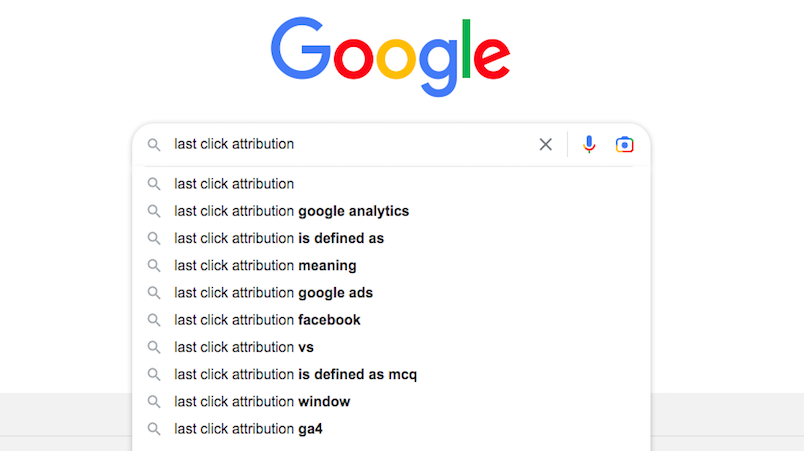Google culls attribution tools – agencies fear swing back to last click, raise transparency fears

Google's clear out of attribution tools risk further reliance on Google marking its own homework, agencies warn.
Google's decision to abandon first click, linear, time decay and position-based attribution will make it harder for advertisers without larger data sets to validate Google's findings, warn agencies, and may force advertisers back to last click attribution.
What you need to know:
- Google is abandoning first click, linear, time decay, and position-based attribution models across Google Ads and Google Analytics 4.
- Data-driven attribution, last click, and external attribution unaffected.
- Agencies say the move hurts transparency in Google ads... and will push smaller advertisers, which make up the bulk of Google's revenue, back towards last click.
We're spending money with Google to advertise. We're using Google ads to optimise. And we're using an attribution model that we don't understand – because we can't see it to report on success. You're totally entrusting [everything to Google].
Google is killing off first click, linear, time decay, and position-based attribution models across Google Ads and Google Analytics 4. Agencies say the move risks pushing smaller advertisers, the bulk of the market, back towards last click – and dispute Google's claims that fewer than three per cent are using the models being axed.
They fear the move further muddies attribution waters.
Outlining the changes Google Product Manager, Attribution, Sheba Rasson, suggested the shift was a clear out of little used models.
"Rules-based attribution models assign value to each advertising touchpoint based on predefined rules. These models don’t provide the flexibility needed to adapt to evolving consumer journeys. That's why we made data-driven attribution the default attribution model in Google Ads and Google Analytics 4. It uses Google AI to understand the impact each touchpoint has on a conversion, and when combined with auto bidding, data-driven attribution improves performance," per Rasson's blog post.
"Data-driven attribution is now the most-used attribution model for conversions used for automated bidding in Google Ads1, resulting in a decline in the overall use of rules-based models. Today, less than 3% of Google Ads web conversions are attributed using first click, linear, time decay, or position-based models." (The 3 per cent figure appears to be based on February and March data this year).
The change needs to be considered from two perspectives, says Gary Nissim, managing director, Indago Digital – Google Analytics and Google Ads.
For the former, Nissim said the shift will limit marketers and agencies ability to create more complex attribution models. “I want to look at different mediums and give them different values for post impression versus post click. It will remove that functionality, so the tool is less useful for me now.”
He thinks that could exacerbate transparency issues for Google’s ad business.
"If you think about it, we're in a position where we're spending money with Google to advertise. We're using Google ads to optimise, and we're using an attribution model that we don't understand because we can't see it to report on success … Google is reporting on that attribution, which you cannot see [the workings of] ... You're totally entrusting [everything to Google],” said Nissim. “So within Google Ads, it’s more control being taken away.”
It seems we are forced to go back to 'last click' attribution with flaky contextual targeting with Google being solely responsible for measuring its own performance and marking its own homework.
Kees De Jong, a former Sizmek senior exec turned specialist marketing and tech recruiter at Uncommon People, agreed the shift would hit firms without big data sets of their own, and would likely benefit Google, which some suggest faces threats to its search dominance from emerging technologies.
"It seems we are forced to go back to ‘last click’ attribution with flaky contextual targeting with Google being solely responsible for measuring its own performance and marking its own homework," reckons De Jong.
After almost two decades of unchallenged dominance, Google now finds its core business – search – suddenly contestable again. Firstly is is confronted by the consequences of Microsoft's decision to go all in with OpenAI around ChatGPT with deep integrations into Bing, and eventually the wider Windows productivity based apps. There is already some very early evidence that Bing is benefitting, according to analysis by Nissim's indago digital co-founder Peter Dimakidis, who shared data in a LinkedIn post recently indicating a one per cent YoY change in the distribution of Bing organic traffic.
"Though it may appear modest, this represents a 19.6 per cent increase YoY", he wrote. While noting that the distributions have wavered within a one per cent range when examining monthly data from 2021 he also referenced a Search Engine Land article that reported a 15.8 per cent rise in Bing page visits.
Beyond Bing, Google also needs to account for Amazon's growing share of ad dollars as retailers push search budgets towards the global ecommerce giant – as well as into and other retail media networks – a trend that is set to continue per major US advertisers polled by the ANA.








